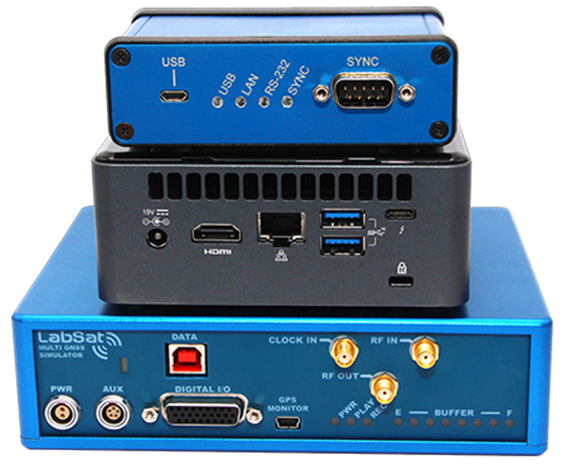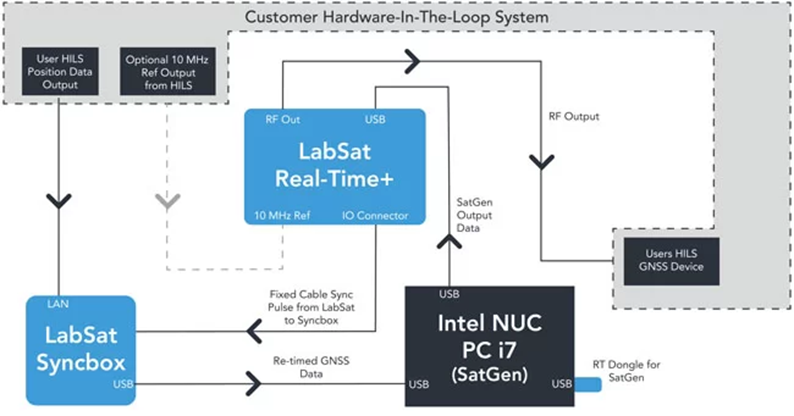Which LabSat should I use?
For GNSS enabled Hardware-in-the-Loop testing we would recommend integrating the LabSat Real-Time+ in your test setup.
Overview
For HIL testing and development of GNSS enabled systems, LabSat Real-Time+ generates a live, dynamic GNSS RF signal that corresponds to positional data supplied by a HIL simulator. Any change in the HIL simulator position produces a corresponding change in the GNSS signal, with very low latency.
LabSat Real-Time+ can simulate a GNSS RF signal anywhere in the world using GPS L1, Galileo E1, BeiDou B1 and GLONASS L1 constellations.
It has two available RF channels that can simultaneously simulate up to three satellite constellations (GPS L1 and Galileo E1 share the same centre frequency, so can therefore be simulated using a single RF channel). LabSat Real-Time+ combines a LabSat Real-Time+ simulator, a LabSat Syncbox, an Intel NUC PC and SatGen Real-Time+ simulation software.

How LabSat Real-Time+ Works
- Positional data from the device under test (DUT) within the HIL system is supplied to the LabSat Syncbox via an ethernet or serial connection as an NMEA stream at a rate of up to 1000 Hz.
- To ensure consistent, low-latency performance, the Syncbox receives a standardised 100 Hz sync pulse from the LabSat Real-Time+ simulator. It then interpolates the NMEA data into a 100 Hz stream aligned with the sync pulse (regardless of the original NMEA input rate) and feeds it into the factory configured Intel NUC PC running SatGen Real-Time+ simulation software.
- SatGen Real-Time+ simulation software then generates the corresponding scenario, and an RF signal is output via the LabSat Real-Time+ simulator and back into the DUT in the HIL system.
LabSat Real-Time+ System Connection Diagram


